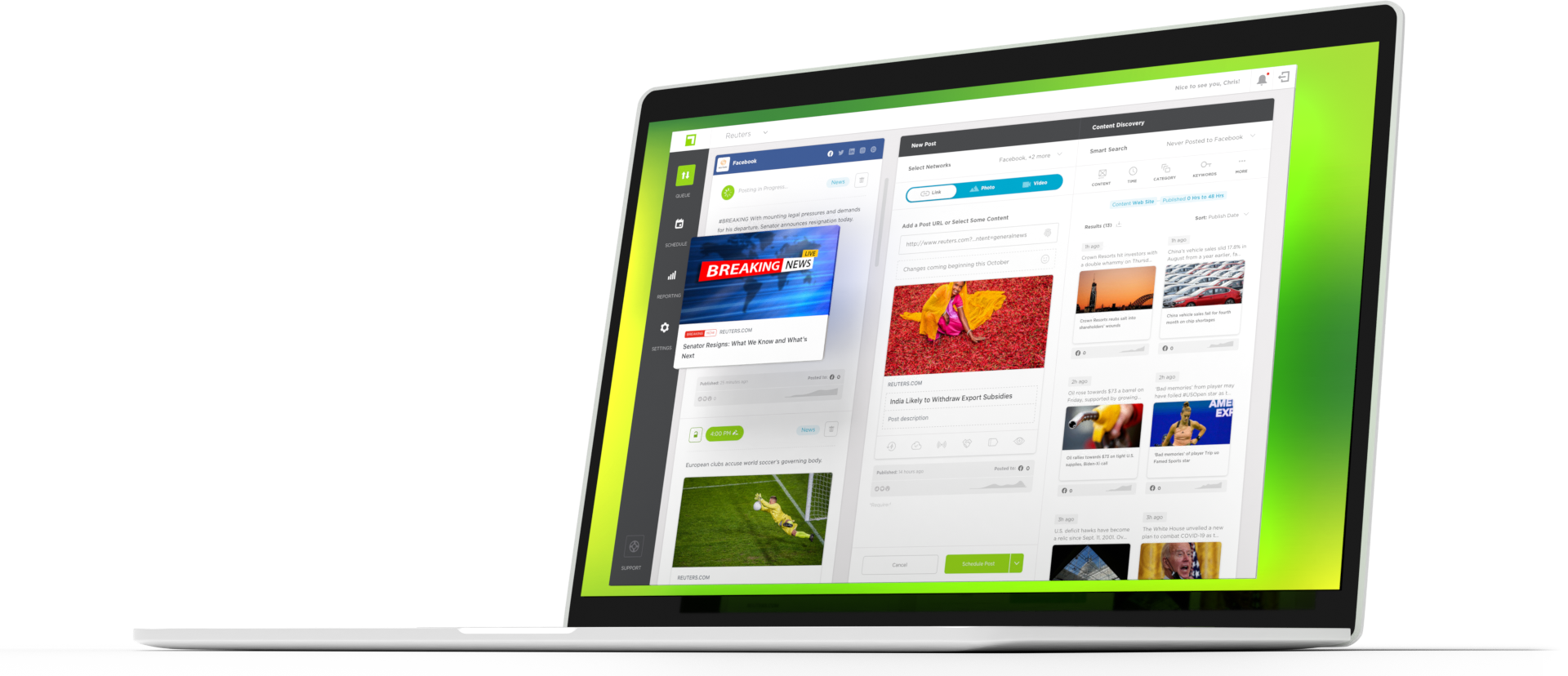Once upon a time, published articles just sat on newsstands, inside a magazine or newspaper, waiting for busy people to stop, pick them up, and buy them. It seems like ancient history, right? Articles would tag along with hopes of being read and not added to the stack on the desk or the wastebasket. Then social publishing entered the game and changed everything we thought we understood about publishing. So, what exactly is social media’s impact on publishing?
In short, very different expectation has been set for the news industry. Readers no longer seek out their information—they wait for it to come to them. As a publisher, you have to meet your audience where they are and tell them why they care. While this may sound like a daunting task, the ability to target your audience with appropriate content is a game changer.
Efficient distribution for social publishers
Today, article distribution is easier and more efficient for both the reader and the publisher.
Billions of people pick up their phones and scroll on social media every day. As a publisher, you have a line to massive audiences.
Writers can turn an article from outline to published in hours, sometimes minutes. One click, and the article is published and distributed to potentially millions of eyeballs.
Readers only have to open their phones and scroll to get today’s news and updates. Stumbling upon fresh content while scrolling content has replaced newsstand browsing and evening news TV.
Social media’s impact on publishing is that it gets the right content to the right people at the right time. If you need help with any of these things, that’s why we’re here. Set up a demo with our team today to help you get the most out of your content.
Get our social media and digital publishing updates straight to your inbox
Immediate updates for users
Breaking news does not wait for a publication schedule. Instead, there is a race to see who can get the information out first.
Readers get breaking news updates in their social media feeds without the need to search for them. When friends and family share important articles, especially breaking news, readers see articles from organizations they don’t follow.
User engagement & feedback
It is easier to publish content and distribute it instantly, but user engagement now plays a massive role in publishing. Publishers get immediate feedback on how readers feel about their work. A great article will get likes, comments, and shares, which further amplifies the distribution of the article. Simple clicks provide real-time feedback to writers that the article is getting seen and that they want more of it.
Even better, readers can provide immediate feedback on how they feel about a piece of content and let their friends and family know. While clicking is easy, the real gold comes from comments and shares. Engaged readers can ask questions and interact with other readers and the author. Sincere comments and questions provide an immediate feedback loop to help improve writing and publishing in a way that readers want to consume and will keep them coming back for more.
Publishers are prioritizing social media
We can tell you about the benefits of using social media all day long. The proof you need to believe is the actions of other publishers and most are turning their efforts in this very direction.
Data shows that publishers are prioritizing social media as a primary method for distribution. In 2021, at least 58% of publishers developed marketing strategies focused on creating better-quality social media content. Another 55% focused on increasing traffic, 41% on subscriptions, and 40% wanted more engagement and followers.
Publishers of all sizes are seeing the value in using social platforms to engage new audiences, grow website views, and increase the number of digital subscriptions. Despite the ever-changing landscape of social media, it’s become the mecca of human connection worldwide and right where publishers want to be.
The role of social publishing
Social publishing plays a vital role in the profession of publishing and the lives of readers. Getting content out timely and knowing it will reach eyeballs fast is invaluable, especially when you think about how impossible that was just a decade ago.
However, the real value of social publishing comes from the user engagement and feedback received. Knowing how the reader reacts and interprets the content allows publishers to improve their content strategy and give readers what they want and when they want it. Using tools like True Anthem will enable publishers to schedule and distribute content that works best for the readers, improving your distribution and increasing user engagement.

